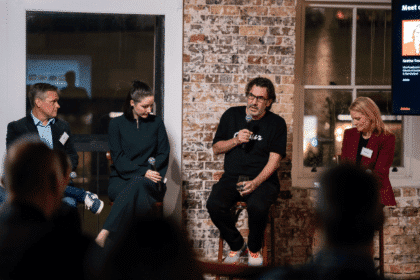In this guest post, Hannah McElhinney (pictured below) from youth agency Snack Drawer writes that as the pressure on marketers to be inclusive in their campaigns rises, so do the stakes and Accusations of virtue signalling and tokenism are a genuine fear…
The past week’s been a big one in purpose-driven advertising. We’ve seen many brands go rainbow in celebration of Mardi Gras and many others come out with major ATL campaigns in support of International Women’s Day. Just like every year, there are some that go down a treat with audiences, and others that leave audiences wondering what kind of misguided Don Draper antics went on behind the scenes.
Representation and inclusivity is an era-defining conversation, that many in the industry want to be on the right side of. However, the stakes are high, and brands that get it wrong face worse consequences than those who don’t try at all. This week we saw Burger King’s International Women’s Day attempt, which they have since apologised for, and which has likely done more damage to the brand’s reputation than if they’d stayed silent on the day. It has since been taken down.
To be tokenistic or out of touch?
When we see high profile misses like this, marketers and agencies naturally become wary of so-called ‘social good campaigns’, fearing accusations of tokenism and performative virtue signalling. On the other hand, brands who do not represent progressive social values in their communications also face backlash for their silence, and even erosion to their bottom line as data consistently shows that Gen Z and millennials choose brands that reflect their values. So is it better to be tokenistic or out of touch? The answer is neither and there is a way that brands can get representation right.
The problem is most social good campaigns are tokenistic by nature. They attempt to tick as many boxes as possible or only focus on the marginalised quality of the people they’re trying to represent. For example, most representations of queer people in advertising are focussed on the ‘queer experience’ – coming out, parental acceptance and marriage. Trans people are represented when brands want to make a powerful statement about gender and people of colour are often shown as part of a diversity of skin tones to highlight a brands commitment to all Australians. When it comes to women, we’re used to seeing strong women represented very intentionally, mostly when a brand is making a statement about how they value strong women. In the case of Burger King, this was so intentional they felt the need to reinforce a sexist trope first, just to ensure their audience knew they were subverting it.
Finally, these ‘conscious campaigns’ tend to launch around particular time periods where it is permissible to have these conversations, like International Women’s Day or Mardi Gras. While these time periods are very important in their own right, when advertisers jump on them audiences are left scratching their head wondering, ‘Why now? What about the rest of the year?’. Of course, there are a few brands that have earned their right to speak out on these days, as they have built up a sustained history of integrating different voices into their storytelling over a number of years, but very few brands fall into this category.
A way forward
Essentially, the campaigns that miss the mark do so because they’re superficial. They reduce marginalised people to their minority status, ignoring all the other facets of their individual selves.
Queer people should not just be represented around Mardi Gras, but all through out the year. They belong in ads selling safe family cars and fresh read-made meals. Strong women don’t need to be represented as part of subversive women’s campaigns, but belong in content promoting sunscreen or soy milk.
The beauty in this approach is that brands can start right now. Brands don’t need to wait for the next calendar moment or worry about earning the right to participate in a global conversation they haven’t yet dipped their toe in. We can all take the next tactical or product campaign and challenge ourselves to tell the story through a different lens.
If as an industry we can move beyond creating splashy campaigns around events like Women’s Day and Mardi Gras, and instead begin centring everyday product stories around different voices, the work will be more interesting, more inclusive and less likely to result in a public apology.









